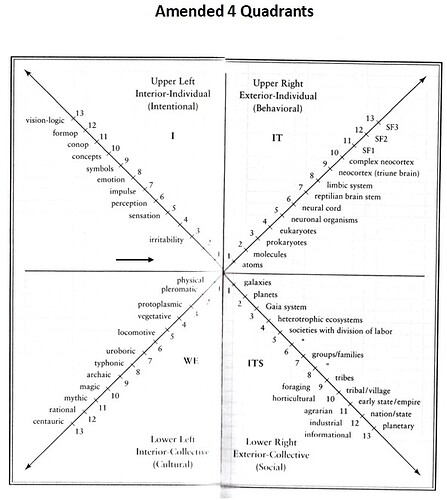On Sunday, August 20, I initiated a minor debate with two integral friends about the “inner/outer” of evolution in Integral Theory. KW wrote: “every exterior has an interior,” (call it ‘E/I theory’: SES, page 127)-- (1) prehension in non-living holons, e.g. atoms, quarks, strings and (2) actual consciousness in organisms, as shown in the standard 4 quadrant map. My view:
-
We have evidence for (2) but not for (1). Organisms adjust/adapt/react to their environment in ways that cannot be explained solely in terms of physical factors, e.g. chimpanzees and other species whose young learn by imitating their parents and other adults. Explanation of such behavior has to posit consciousness or some kind of interiority in organisms. By contrast, the behavior of atoms can be completely explained by the laws of physics; no need for prehension.
-
I understand that Ken likes E/I for internal theoretical coherence—it avoids a radical discontinuity in the evolution of holons: interiors all the way up and all the way down. I like it, too, but we should admit that the concept is an item of speculative metaphysics, not of any evidence-based science or ontology. It is not one of the 20 tenets either–I checked. Perhaps E/I could be added as an additional tenet.
-
There is already unavoidable discontinuity in IT’s theory of evolution, viz. macroevolution— transition from lower holons, e.g. single cell organisms to multi-cell organisms is a leap in vertical evolution. Transcendent properties of higher level living holons are emergents via “creative advance into novelty,” so why couldn’t interiority itself be an emergent property of evolution from inorganic holons to living ones?
-
If I am right, an amended 4 quadrant map would look like the one below where prehension has been removed and interiority shows up first at fulcrum 3.
